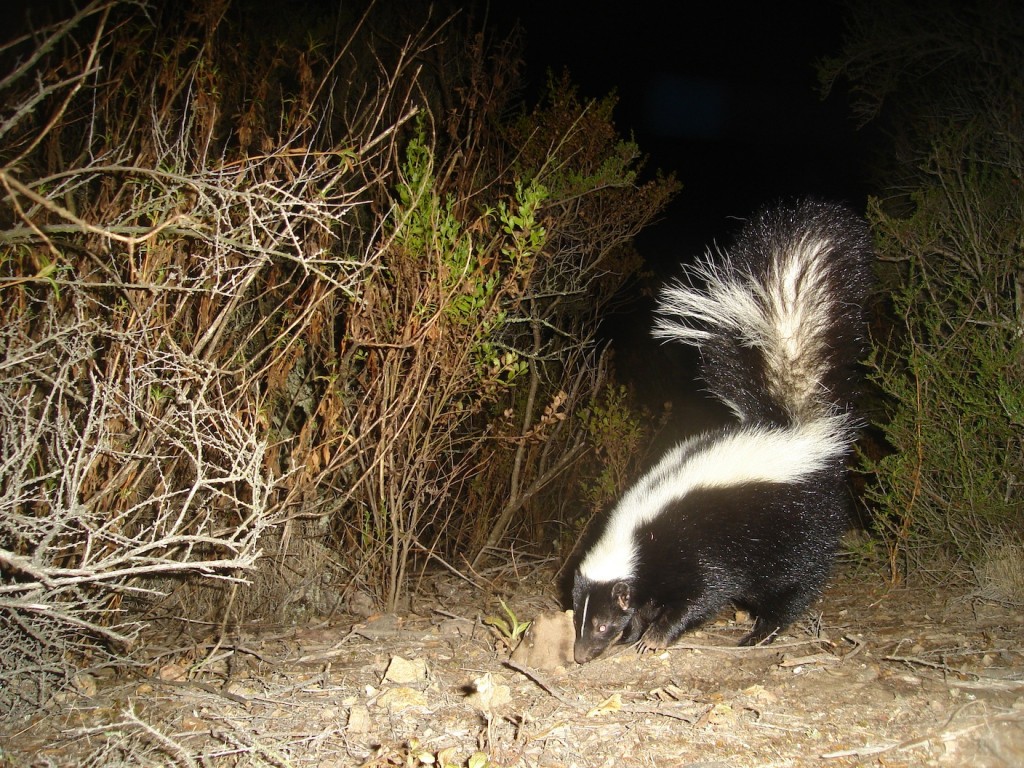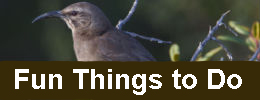 Over a period of several weeks, teacher and photographer Christian Naventi took a series of photos of a few of the species of wildlife from within the rare maritime chaparral. This area would be fenced off if the Oakland Zoo succeeds in building its proposed expansion. Setting up a camera along a trail, he was able to capture species that use the area to forage, hunt, and mark their territories.
Over a period of several weeks, teacher and photographer Christian Naventi took a series of photos of a few of the species of wildlife from within the rare maritime chaparral. This area would be fenced off if the Oakland Zoo succeeds in building its proposed expansion. Setting up a camera along a trail, he was able to capture species that use the area to forage, hunt, and mark their territories.
Striped skunks pass through the area–their long sharp claws are for digging out roots and grubs,–the darkling beetle is a favorite delicacy. They use their fleshy nose to probe the soil and sniff out food items. The black and white coat serves as a warning to potential predators to stay away. When the warning fails to deter the predator, the skunk sprays a foul, irritating fluid from its scent glands at the base of its tail. Interestingly, Great horned owls are not bothered by the odor and are a major predator of skunks.
The eastern red fox was introduced the past century for hunting. It has spread and become a major pest. The native gray fox is in heavy competition with the introduced eastern red fox. They mark their territories with scents from their chin glands, urine, and feces. The photo sequence shows both species marking a spot and detecting the presence of the other species. Foxes feed on fruits, like manzanita berries, as well as on small mammals and birds. One of their chief prey species–the brush rabbit–feeds upon grasses and low-growing vegetation and uses the dense chaparral as cover.
Many different species of birds inhabit the chaparral. The California thrasher–a secretive bird– has an enormous curved beak that it uses to break up clods of earth and sift through the leaf litter on the ground in search of insects. Like the mockingbird, the thrasher mimics the calls of other species and weaves them into long intricate songs. The scrub jay–a species that has adapted to a more generalist mode of life–can be readily seen in every plant community in the park and in the surrounding neighborhood. It collects and buries acorns–one of the reasons that oaks are invading the chaparral. In some areas the jay preys upon the eggs and nestlings of song birds.
The beautiful California quail–our state bird–looks as if its camouflaged feathers were hand-painted. Coveys of quail search the ground for seeds of the chamise and take cover among the chaparral. The more brightly colored male often stands guard from above on a perch while the rest of the covey feeds. Unfortunately, domestic cats have decimated quail populations in some areas. The spotted towhee–another beautiful bird found in shrub communities–hops and scratches in the duff for seeds and insects. The photo is of a male–females have a dark gray head. Both sexes have white spots along their wings and backs which help them hide in sun-dappled shade.
What these photos reveal is a rich web of life seldom seen except in the wee hours of the morning when humans are rarely around. Still, we can see evidence of their existence in the tracks, droppings, or in occasional glimpses of them on the trails, especially if we move slowly or sit and quietly wait. The calls of the chaparral birds are an ever present reminder that wildlife thrives in this dense, thick quintessentially California habitat.
Click on any photo below to begin a slide show.
[AFG_gallery id=’12’]
 Follow
Follow








Comments are closed.